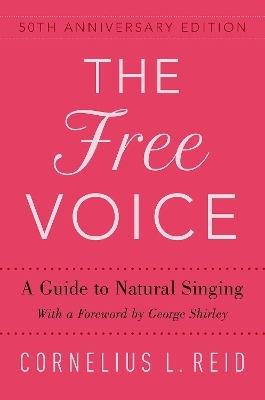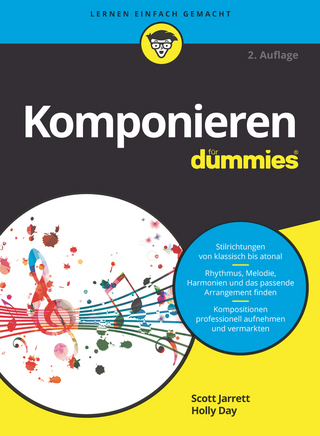
The Free Voice
Oxford University Press Inc (Verlag)
978-0-19-068391-7 (ISBN)
Great vocal teachers from the 16th century through the early 19th century discovered through trial and error how to properly develop the singing voice, and the term bel canto came to be applied to both the manner of singing and the vocal music of that period. But by 1858, according to Rossini, the term was already being misused and wrongly confused with fioriture. Well-schooled in the teaching of singing, Rossini more accurately describes bel canto as being composed of: the building of the instrument; technique, or the means of using the instrument; and style, of which the ingredients are taste and feeling.
In this 50th anniversary edition of The Free Voice, renowned vocal pedagogue Cornelius L. Reid articulates the teaching principles of his own school of functional vocal training, grounded firmly in the old principles while remaining in line with a modern understanding of the physical value of the vocal instrument. The muscles that move the vocal folds and the vocal folds themselves are involuntary, and as such, the singing voice is not an instrument that can be manipulated directly. Reid's approach to singing is one of indirect control, stemming from an understanding of the vocal registers and how specific patterns of pitch, intensity, and vowel affect the vocal folds. Through the vocal exercises outlined in this book, and catered to each individual, a poorly coordinated musculature can be brought to efficiency. Only when the musculature of the vocal mechanism is well-balanced and coordinated can the voice be free, and the natural beauty and resonance of the individual voice come through without force.
Cornelius L. Reid (1911-2008) began his studies in music at Trinity Church Choir School in New York City as a boy soprano in 1920. His teaching career began as assistant to Dr. Douglas Stanley from 1934 to 1937. From that point on, he developed his own school of functional vocal training based on Italian methods of the pre-scientific era, combined with insights afforded by modern concepts of physiology, acoustics, and psychology.
Foreword
1 Introduction
2 The Organs of Voice
Natural Singing: Correct vs. Habitual
3 Vocal Control
Direct Control
Control Through Self-Awareness
Conceptual Control and Its Limitations
4 The Vocal Registers
Mechanics of the Registers
'Pure' Registration
Registers and Intensity
The 'Break'
'Mixed' Registration
A Coordinated or 'Blended' Registration
The 'Two-Voiced' Singer
Segmentation of the Registers
Register Rotation
Parallel Relationships
Registers and Interpretation
5 Aesthetic Judgment
Vowel Quality
Vowel Adaptation
Common Factors
The Legato
The Attack
Vocal Limitations
Voice 'Building'
6 Conceptual Evaluations
Textural Properties of the Vowel, Registration and Resonance
Temperament, Anatomical Structure and Emotional Identification
7 Vocal Exercises
Exercising the Registers
Exercises for Separating the Registers, Female Voice
Exercises for Separating the Registers, Male Voice
Exercises for Register Mutation
Preparatory Exercises for Combining the Registers, Female Voice
Preparatory Exercises for Combining the Registers, Male Voice
The Messa di Voce
Messa di Voce-Female Voice
Messa di Voce-Male Voice
Practice
Repertoire and Interpretation
8 Breathing
Breath 'Control'
Feeling and Emotion
9 Characteristic Voice Movements
The Vibrato
The Tremolo
The Wobble
10 Attitudes Toward Teaching and Learning
Self-Perception
Freedom and Intuition
Spontaneity
Stimulus Control
Tangible Control
Energy and Movement
The Conditioned Reflex Theory
APPENDIX
The Composition of Vocal Tone
Pitch
Intensity
Resonance
Duration
Quality-The Vowel-Timbre
Index
| Erscheinungsdatum | 10.07.2018 |
|---|---|
| Co-Autor | George Shirley |
| Zusatzinfo | 13 line |
| Verlagsort | New York |
| Sprache | englisch |
| Maße | 231 x 155 mm |
| Gewicht | 318 g |
| Themenwelt | Kunst / Musik / Theater ► Musik |
| ISBN-10 | 0-19-068391-0 / 0190683910 |
| ISBN-13 | 978-0-19-068391-7 / 9780190683917 |
| Zustand | Neuware |
| Haben Sie eine Frage zum Produkt? |
aus dem Bereich


